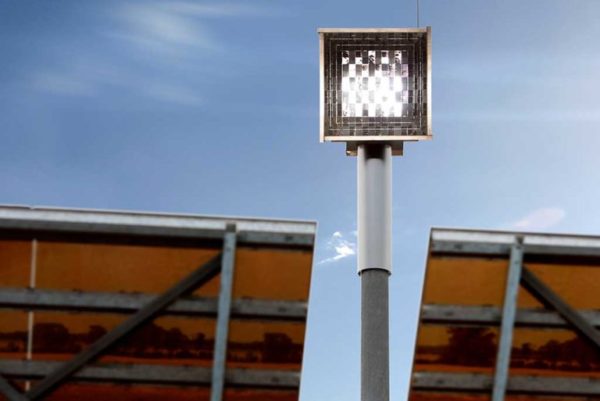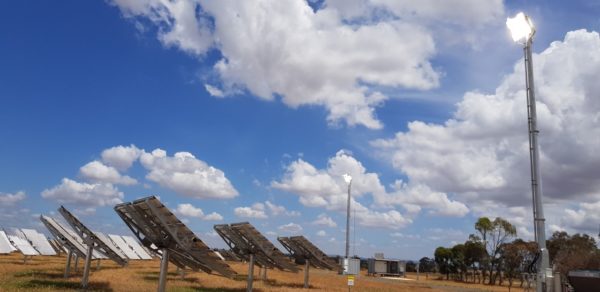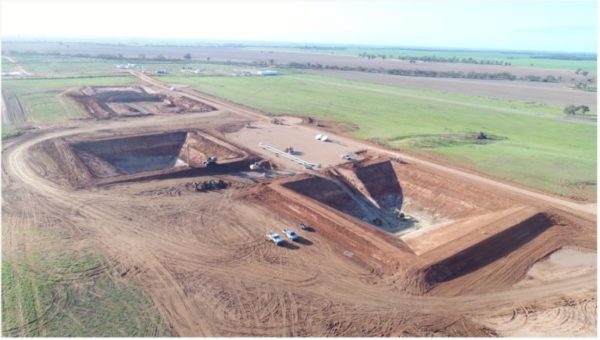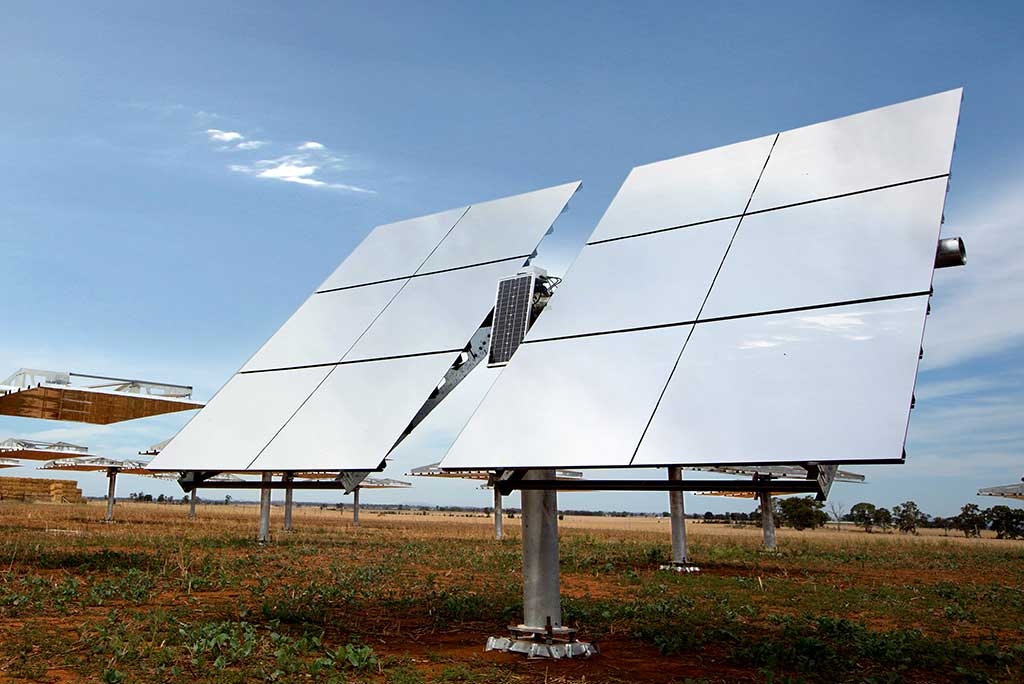Dutch renewable energy company Photon Energy is planning to build a 300 MW/3.6 GWh solar-plus-storage project on 1,200 hectares of land at an unspecified location in Australia.
The company said it was working on the permitting and grid-connection processes and expects to complete the preparatory work by the end of 2023
The plant will rely on the solar hydro power plant technology developed by Australian technology company RayGen, which features concentrated PV technology that generates heat as a by-product, which is captured and used for thermal storage. Electro-thermal storage comprises water-based pit thermal energy storage, Organic Rankine Cycle (ORC) turbines and industrial chillers.

Image: RayGen
“A field of sun-tracking mirrors, known as heliostats, focus the sunlight onto a receiver containing an array of PV Ultra modules,” a spokesperson from Photon Energy told pv magazine. “The mirrors have two-axis tracking drives which are self-powered by a small solar panel and battery.” The mirrors are completely wireless and there is no field wiring. Photon Energy uses sophisticated control algorithms with optical imaging to ensure the heliostats remain on target.
The modules are made with gallium arsenide (GaAs) solar cells manufactured by Germany's Azur Space Solar Power GmbH, a manufacturer of multi‐junction solar cells for space and terrestrial concentrated photovoltaic applications. “Measuring just 10 cm x 10 cm, this module generates approximately 2.5 kW of electricity and 5 kW of heat – equivalent energy to a rooftop of solar panels and a rooftop of solar hot water panels,” the spokesperson went on to say. “The module is almost 2,000x more electrically powerful than a normal solar panel, as it is approximately two times the electrical efficiency of a standard solar panel and under almost 1,000x sun concentration.”
The front surface of the module is covered by small multi-junction GaAs cells and the rear has a heat sink that captures the heat using treated water as coolant. The module is manufactured by RayGen in Melbourne, Australia.
“Our current receiver is over 400 modules, and can generate over 1 MW of electricity and 2 MW of heat,” Photon Energy said. “Note the electricity is generated directly, and the heat is captured as a by-product of cooling the panels.” The towers are 45 m high and of a similar scale to a cell phone tower. According to the company, these are easy to install and replicate.

Image: Photon Energy
As for the storage unit, Photon Energy said the organic Rankine cycle (ORC) turbine will be provided by Swedish conglomerate Atlas Copco. “This turbine uses a working fluid that boils at moderate temperatures – in our case, the working fluid boils at less than 90 degrees Celsius,” the company spokesperson said. “The industrial chiller is a standard industrial chiller.”
The facility includes two insulated water-based thermal storage pits or reservoirs. One of the reservoirs is kept at a temperature of 90 degrees Celsius and the other at close to 0 degrees Celsius, and the temperature difference is used to generate dispatchable electricity using the ORC turbines.
The project's LCOE is estimated at less than US$0.072/kWh. “The specific LCOE of the technology depends on the application, location and other factors,” the spokesperson emphasized. “We’re demonstrating economic project returns – better than pumped hydro – in a market where solar-only and solar-plus-battery projects are increasingly challenged.”
The proposed approach is similar to that of pit thermal energy storage, which is typically used for the district energy market in Northern Europe. With this technology, hot water is stored in insulated pits during the summer and, in winter, the heated water is circulated through the district to heat up residential and commercial buildings.
RayGen has been operating the technology for more than six years in a 1 MW pilot project at Newbridge, Victoria and is currently building 4 MW of solar PV generation and 3 MW/50 MWh (equivalent to 17 hours) of dispatchable storage capacity at Carwarp in the state’s northwest.

Image: RayGen
The Carwarp facility is due for completion in mid-2022 and RayGen expects it will be able to satisfy the Low Emissions Technology Statement stretch goal of providing firmed renewables for under $100/MWh.
This content is protected by copyright and may not be reused. If you want to cooperate with us and would like to reuse some of our content, please contact: editors@pv-magazine.com.





1 comment
By submitting this form you agree to pv magazine using your data for the purposes of publishing your comment.
Your personal data will only be disclosed or otherwise transmitted to third parties for the purposes of spam filtering or if this is necessary for technical maintenance of the website. Any other transfer to third parties will not take place unless this is justified on the basis of applicable data protection regulations or if pv magazine is legally obliged to do so.
You may revoke this consent at any time with effect for the future, in which case your personal data will be deleted immediately. Otherwise, your data will be deleted if pv magazine has processed your request or the purpose of data storage is fulfilled.
Further information on data privacy can be found in our Data Protection Policy.